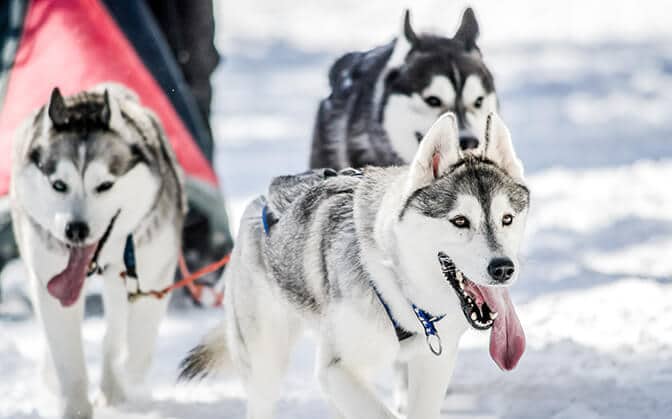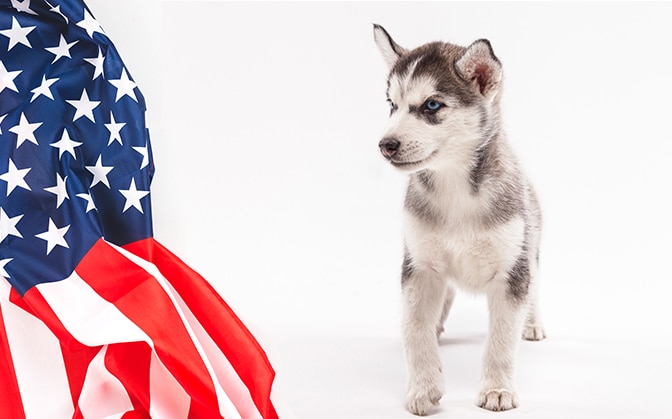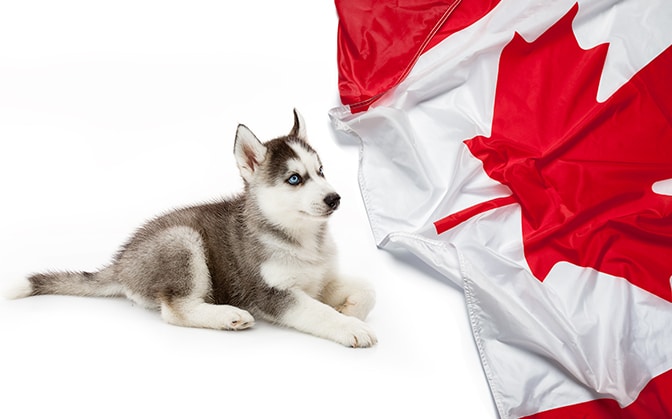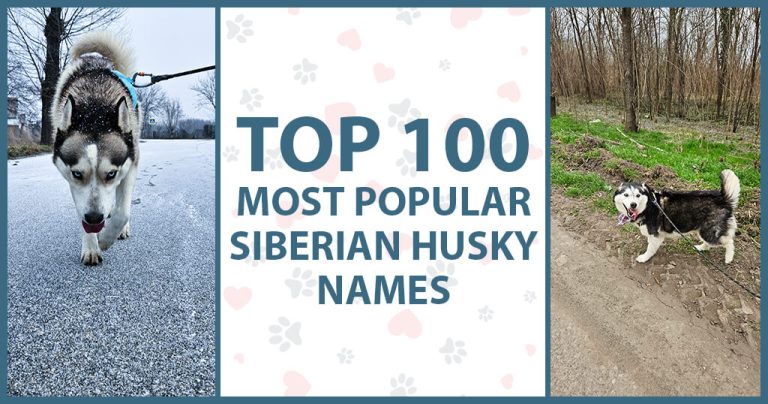The history of the Siberian husky breed is important when we want to understand the past and the present of our Siberian husky. We can better understand why our huskies act the way they act sometimes and why they look the way they do. Knowing their history will help us to appreciate more the dogs that we have and to look at them in a new way. We’ll be able to see some details in our Siberian husky puppy’s behavior that we never noticed before.
When people talk about Siberian huskies, they tend to say that this breed has „wolf blood and traits”. In this affirmation, we can find a little bit of truth when we think about the breed’s origins. The evolution of dogs from wolves is real. Either if you want to believe in artificial selection, natural selection or both, the evolution of wolfs to dogs took thousand years and a lot of work.
Difference between husky and wolves
The differences between wolves and Siberian huskies are huge. Form and behavior are colossally differently. Wolves are wild and they avoid people in the wilderness. Dogs live around locations where people live and they expect food from people.
Wolves have varying shades of yellow eyes, while huskies can have brown, light brown, green, gray, ice blue, deep blue or amber eyes. Some huskies have two different colored eyes.
We shouldn’t treat dogs as they are an inferior form of a wolf because we couldn’t be more wrong. For example, wolves are not sledding dogs. They cannot perform these tasks as well as huskies.

The beginning of the Siberian huskies breed
As we mentioned before, we’ll go back several thousand years ago. Location Siberia. More specific, in Eskimo-like tribes in Siberia. Dogs were essential for these tribes. They were used for specific functions. Helping to transport food to other villages, accompanying hunters and scenting trails being just some of the usual activities Huskies were asked to do. Huskies we’re treated as a part of the family. Chukchi women took care of the dogs and the children played with these furry huskies.
Each tribe chose to breed-specific breeds of dogs, depending on the tribe’s needs. This resulted in different breeds such as Akita, Alaskan Malamute, Samoyed, and others. At one time in history, thousands of years ago, the northern dogs were crossbred with arctic wolves. Nowadays, the wolf factor is bred out, through careful breeding and maintenance over the years. We understand now that today huskies are not, and cannot be considered a wild hybrid.
Siberian huskies and Siberian Chukchi Tribe
The Siberian Husky is originally bred by the Siberian Chukchi Tribe in eastern Siberia, the part near to Alaska. The weather was harsh and the tribe needed sled dogs for transportation. With the help of the dogs, they managed to transport and trade goods between tribes. They carried light cargo at medium speed. They had to put more dogs to pull if the cargo was too heavy.
The Husky was bred at first for endurance rather than speed or strength. Huskie’s energy level had to be high. They needed to have energy left for keeping their bodies warm during the trip.
Only the best specimens of huskies were bred
There was a selection made between dogs. The Chukchi tribe bred only the best dogs and the others were neutered. The selection factors were: scenting ability, obedience, endurance, coats, and tractability.
You can read more about the breed characteristics here.
Russian huskies
Russian explorers brought the Siberian Husky while they were charting the Siberian coastline. Huskies came to Alaska with the help of a Russian fur trader in 1908.
Great Race of Mercy
You might have heard about the Great Race of Mercy. It took place in Nome, Alaska, on 2 February 1925, while there was an outbreak of diphtheria. The people of Nome, Alaska required a serum that was found in Anchorage, Alaska. The severe weather condition made it impossible to transport the serum all the way with other options besides using sled dogs. The serum was transported by rail to Nenana – that was the maxim distance that could be done by rail – and from there was carried by sled dogs. Over 650 miles in freezing cold. About 150 dogs traveled with 20 humans five and a half days and they managed to do a miracle.
The Great Race of Mercy was a success. They stopped diphtheria from spreading and lives were saved.
American huskies

In the United States, the Siberian Husky gained recognition as a totally separate breed, in contrast to being seen as just another type of Arctic dog. The breed was recognized as Siberian Husky by the American Kennel Club in 1930.
Canadian huskies

The Siberian Husky breed was first registered in Canada in 1938. At first, the breed was registered as the “Arctic Husky”. They changed the name from “Arctic Husky” to “Siberian Husky” in 1991.
England huskies
The Siberian Husky was first recognized in Britain in 1968. Officially and fully recognized, the Siberian huskies were able to compete in 1986.
Siberian Husky in Switzerland
In 1955 the first record of a Siberian Husky in Switzerland was seen. A few years later, more specific in 1986, the Swiss Club for Northern Dogs was founded.
What do huskies and wolves have in common?
Let’s see what huskies and wolves have in common.
A double coat that protects the Siberian huskies from cold and warm temperatures. The outer coat has long, straight and thick guard hairs. This layer of coat blocks harmful UV rays, allows the skin to breathe in warm weather and holds in heat in cold weather. The tick and a full undercoat of the Siberian huskies is made of soft and fine hairs. The undercoat will keep them warm in winter and will keep the sun away during summer.
Dogs are truly amazing creatures. The breed characteristic features are distinctive for each breed. No other breed can pull a sled like sled dogs, no other breed can herd sheep as herding dogs and no other breed can guard like guardian dogs. You can’t find this level of behavioral complexity in any wolf.
Wolves are majestic creatures too. They are smart and amazing looking. Yet, their natural instinct of being independent in choices and still being a part of the pack in the wilderness will most likely not make them an obedient companion.
Conclusion
This is the history of our friendly and devoted huskies. We now understand why huskies act the way they do. Siberian Huskies must exercise, pull a sled -if it’s possible, play and sleep outside in winter. These are just things that are deeply inserted into their DNA.
The more we find about our precious husky puppy or our adult husky history, the more we are amazed and probably attached to our pup. I hope you found the article interesting and full of cool facts about the Siberian Husky breed.
All this being said, check out the differences between a Husky and a Malamute here.





